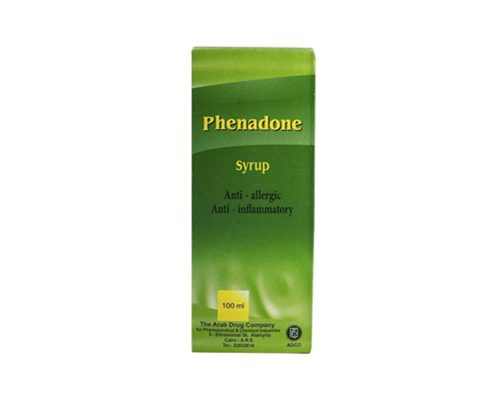Description
Trade name:
Betafos
Compound:
Each 1 ml of suspension contains:
Betamethasone dipropionate 5 mg
Betamethasone sodium phosphate 2 mg
Auxiliary components:
Sodium carboxymethylcellulose, polyethyleneglycol 4000, sodium chloride, methylparaben, propylparaben, sodium dihydrogen phosphate, disodium hydrogen phosphate dihydrate, disodium edetate, tween 80, benzyl alcohol, water for injection.
Properties:
Betamethasone has a strong anti-inflammatory, anti-allergic and immunosuppressive effect.
The anti-inflammatory effect is approximately 25 times more intense than that of hydrocortisone and 8–10 times more intense than that of prednisolone (weight ratio).
The presence of betamethasone dipropionate provides prolonged activity of the drug. This component is a virtually insoluble compound and forms a depot at the injection site, so it is absorbed more slowly and provides symptom relief for a longer period.
Indications:
Dermatological diseases: Atopic dermatitis (nummular eczema), neurodermatitis, contact dermatitis, severe solar dermatitis, urticaria, lichen planus, insulin lipodystrophy, alopecia areata, discoid lupus erythematosus, psoriasis, keloid scars, pemphigus vulgaris, herpetic dermatitis, cystic acne.
Rheumatic diseases:
Rheumatoid arthritis, osteoarthritis, bursitis, tendosynovitis, tendinitis, peritendinitis, ankylosing spondylitis, epicondylitis, radiculitis, coccydynia, sciatica, lumbago, torticollis, ganglion cyst, exostosis, fasciitis, acute gouty arthritis, synovial cysts, Morton’s disease, inflammation of the cuboid bone, foot diseases, bursitis with hard callus, spurs, stiffness of the big toe.
Allergic conditions:
Asthma, status asthmaticus, hay fever, severe allergic bronchitis, seasonal and aperiodic allergic rhinitis, angioedema, contact dermatitis, atopic dermatitis, serum sickness, hypersensitivity reactions to medications or insect bites.
Collagen diseases.
Systemic lupus erythematosus, scleroderma, dermatomyositis, periarteritis nodosa.
Oncological diseases:
Palliative therapy of leukemia and lymphoma in adults; acute leukemia in children. Other diseases. Adrenogenital syndrome, ulcerative colitis, Crohn’s disease, sprue; pathological changes in the blood that require GCS therapy, nephritis, nephrotic syndrome. Primary and secondary adrenal cortex insufficiency (with mandatory simultaneous administration of mineralocorticoids).
Method of administration and dosage:
The dosage regimen and route of administration are determined individually, depending on the indications, severity of the disease and the patient’s response to treatment. The dose should be minimal, and the period of use should be as short as possible. The dose should be selected to achieve a satisfactory clinical effect.
Contraindications:
Hypersensitivity to betamethasone, other components of the drug or other GCS. Systemic mycoses. Intramuscular administration to patients with idiopathic thrombocytopenic purpura.
Precautions:
The drug is not intended for intravenous or subcutaneous administration.
Shake well before use.
Abrupt discontinuation or reduction of the dose in case of continuous use (in case of very high doses, after a short period of use) or in case of increased need for GCS (due to stress: infection, trauma, surgery) may increase adrenal cortex insufficiency. In this case, it is necessary to gradually reduce the dosage. In case of stress, it is sometimes necessary to take GCS again or increase the dosage. Dosage reduction should be under strict medical supervision and sometimes it is necessary to monitor the patient’s condition for a period of up to 1 year after discontinuing long-term treatment or using high doses.
Intra-articular injections of the drug should only be performed by medical personnel.
The drug should be prescribed to pregnant, lactating and women of reproductive age after careful assessment of the benefit to the mother and the potential risk to the fetus/child.
Side effects:
Adverse events, as with other GCS, are related to the dose and duration of use. These reactions are usually reversible and can be reduced by reducing the dose.
Violation of water-electrolyte balance: natremia, increased excretion of potassium, hypokalemic alkalosis, increased excretion of calcium, fluid retention in tissues.
From the cardiovascular system: congestive heart failure in patients predisposed to this disease; hypertension.
From the musculoskeletal system: muscle weakness, myopathy, loss of muscle mass, worsening of myasthenic symptoms in severe pseudoparalytic myasthenia, osteoporosis, sometimes with severe bone pain and spontaneous fractures (compression fractures of the spine), aseptic necrosis of the heads of the femur or humerus, pathological fractures of tubular bones, tendon ruptures, joint instability (after multiple injections).
From the digestive system: hiccups, erosive and ulcerative lesions of the stomach with possible perforation and bleeding, esophageal ulcers, pancreatitis, flatulence, intestinal perforation, nausea, vomiting.
From the skin and subcutaneous tissue: impaired wound healing; skin atrophy; thinning and weakening of the skin, petechiae, bruises; facial erythema; increased sweating; skin reactions such as allergic dermatitis, urticaria, angioedema.
From the nervous system: convulsions, increased intracranial pressure with swelling of the optic disc (pseudo-cerebral edema) usually after completion of treatment, dizziness, headache; migraine, euphoria, mood changes, personality changes and severe depression, increased irritability, insomnia, psychotic reactions, particularly in patients with a psychiatric history, depression.
Endocrine disorders: menstrual irregularities, clinical symptoms of Cushing’s syndrome, fetal growth retardation or growth retardation in children, impaired carbohydrate tolerance, manifestations of latent diabetes mellitus, increased need for insulin injections or oral antidiabetic agents in patients with diabetes.
From the organ of vision: posterior subcapsular cataract, increased intraocular pressure, glaucoma, exophthalmos, blurred vision. Metabolic disorders: negative nitrogen balance due to protein catabolism; lipomatosis; weight gain. From the immune system: GCS can cause suppression of skin tests, hide the symptoms of infection and activate latent infections, and also reduce resistance to infections, in particular to mycobacteria, white candida and viruses.
From the lymphatic system: anaphylactic reaction or hypersensitivity reaction to the administration of the drug and hypotensive reaction.
General disorders and disorders at the injection site: isolated cases of blindness that accompany local application at the level of the face and head, hyper- or hypopigmentation, subcutaneous and cutaneous atrophy, aseptic abscesses, exacerbation after injection (intra-articular administration) and Charcot arthropathy. Secondary suppression of the pituitary gland and adrenal cortex in case of stress (trauma, surgery or illness).
After repeated intra-articular administration, joint damage is possible. There is a risk of infection.
Storage method:
Store at temperatures not exceeding 25 degrees.
Package:
The cardboard box contains 1 glass ampoule of 2 ml, paper instructions.









